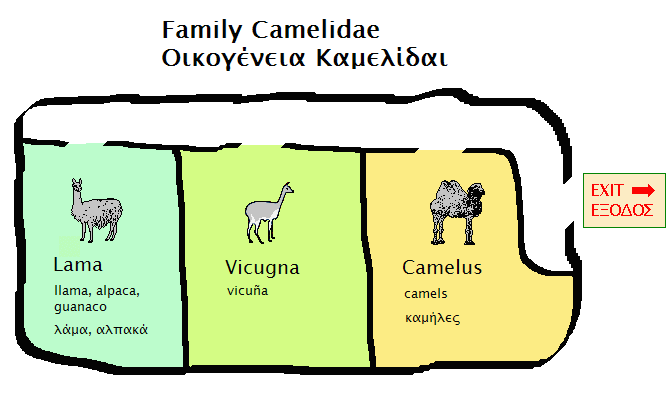

|
All camelids are similar, in having 37 pairs of chromosomes. All of the New World camelids can be crossed to each other to produce fertile offspring.
Despite some major differences in size, all of the camelids are basically similar in structure. Because camelids evolved in a semi-desert environment, they have developed sophisticated physiological adaptations for coping with both heat and dehydration.
All camelids have a complex, 3-compartmented stomach. Although they are not considered ruminants, they do regurgitate and rechew ingested forage. In fact, they are more efficient at feed conversion than are ruminants in extracting protein and energy from poor quality forages.
All of the camelids evolved in North America. Although the ancestors of the lamas and camels appear to have diverged sometime in the Eocene epoch, they weren't completely separated from each other until the Pleistocene, when the ancestors of the camels migrated across the Bering Strait (temporary) land bridge to Asia. Lamas migrated to South America, and all camelids died out in North America.
The original migrants to South America were longer legged, as they were adapted to a plains ecology, but genera evolved in the Andes that were shorter legged, a better mode for mountainous terrain. The guanaco has the broadest distribution of the four camelids, from the tip of Tierra del Fuego to the Andes.
Source: Medicine and Surgery of South American Camelids (Llama, Alpaca, Vicuna, Guanaco) by Dr. Murray E. Fowler.
Order Artiodactyla
Subclass Eutheria
Class Mammalia
Subphylum Vertebrata
Phylum Chordata
Kingdom Animalia
Life on Earth
Index